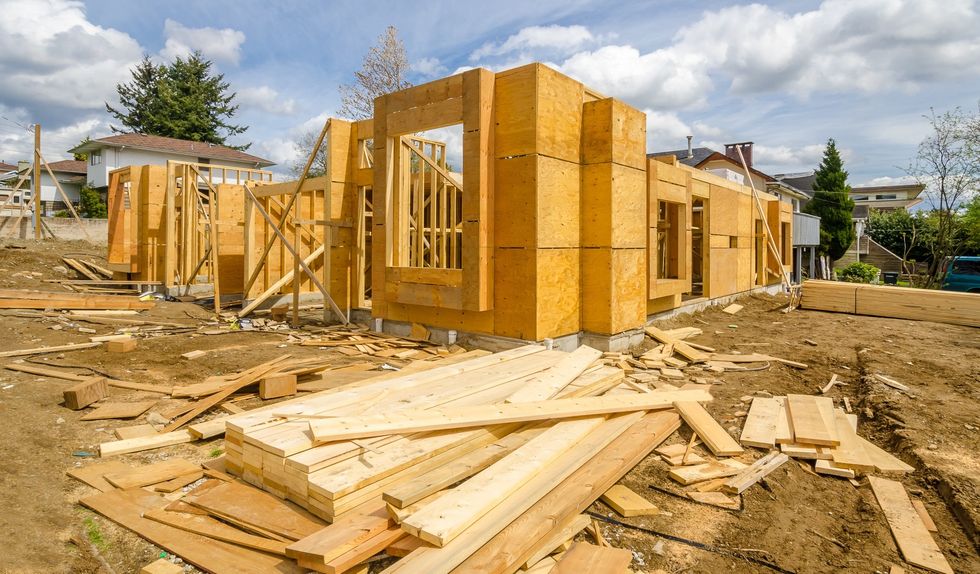If you think cities like Toronto are crowded now, wait until 2073. By then, Canada’s population could skyrocket to 63 million, according to medium-growth projections from Statistics Canada (StatCan) that were released on Monday. Currently, the country’s population sits at 40.1 million (2023), says Canada’s national statistical agency.
The report opens by highlighting a few dramatic realities.
“Since the last edition of Statistics Canada's population projections for Canada, provinces and territories, released in 2022, Canada's demographic landscape has evolved substantially: population growth has accelerated following many permanent and temporary immigrants coming to the country, fertility has reached a record-low level in 2022, and life expectancy has decreased for three years in a row (from 2020 to 2022).”
With low birth rates and an aging Canadian population, migration will remain the driving factor behind the country’s population growth moving forward, says StatCan. It already is. Canada has seen record-breaking population growth in recent years.
“In all scenarios, migratory increase would be the key driver of population growth in Canada, continuing a trend observed since the beginning of the 1990s,” reads the report. “Natural increase—that is, the balance of births minus deaths—would play only a marginal role, given the anticipated rise in the number of deaths due to population aging, as well as low fertility, a situation observed in many other countries.”

According to StatCan, in all projection scenarios, the provinces of British Columbia, Alberta, and Saskatchewan are all expected to take up more of Canada’s overall population by 2048. Meanwhile, New Brunswick, Newfoundland and Labrador, Nova Scotia, and Quebec are projected to comprise less of the country’s total population by 2048. According to StatCan, some regions could actually see their numbers of residents drop between 2023 and 2048. For example, according to the low-growth scenario, the populations of Newfoundland and Labrador and the Northwest Territories would both decrease between 2023 and 2048.
So, some regions will feel the pressures of a national population swell more than others. In all projection scenarios, Ontario and Quebec would continue to be the most populous provinces in Canada over the next 25 years. Naturally, many newcomers gravitate to the country’s large urban centres. Regions like the Greater Toronto Area (GTA) are currently in the grips of a relentless housing crisis that's characterized by high prices (both to buy and to rent) and low levels of supply.
Of course, the big, impossible-to-ignore question remains as important to ask as ever: where’s everyone going to live? Seriously though. At a time when relentless cries to “get more shovels in the ground” dominate press conferences from all levels of government, the reality remains that the pace at which the country is building is no match for these population projections.
The first half of the year has been riddled with reports on everything from drops in building permits and housing starts to the layers of red tape preventing faster construction. Housing experts, economists, and politicians, meanwhile, paint Canada’s housing market as one that’s perpetually unaffordable and severely under-supplied. Yet, the population keeps rising.

As BMO Chief Economist Douglas Porter told STOREYS earlier this month, population growth is directly correlated to more expensive homes. In short, he calls demographics the greatest driver of home prices over the long term (as opposed to cyclical things like interest rates). “The infrastructure in place and the industry’s ability to build clearly can’t support unchecked levels of demand,” he said. Furthermore, in cities like Toronto, development costs quietly increased yet again on June 6th, a move critics say will inevitably make the city’s relentless housing affordability problem worse. The reality is that these costs will undoubtedly be passed on to homebuyers.
Affordability aside, supply is lacking. While the narrative is that we better start building to accommodate this growing number of Canadian residents, many municipalities are simply not on track to meet housing targets.
In the meantime, just last week StatCan announced that Canada’s population had surpassed 41 million people in the first quarter of 2024, hitting 41,012,563 on April 1, 2024. This comes less than a year after StatCan announced that the country’s population hit 40 million, on June 16, 2023.





















